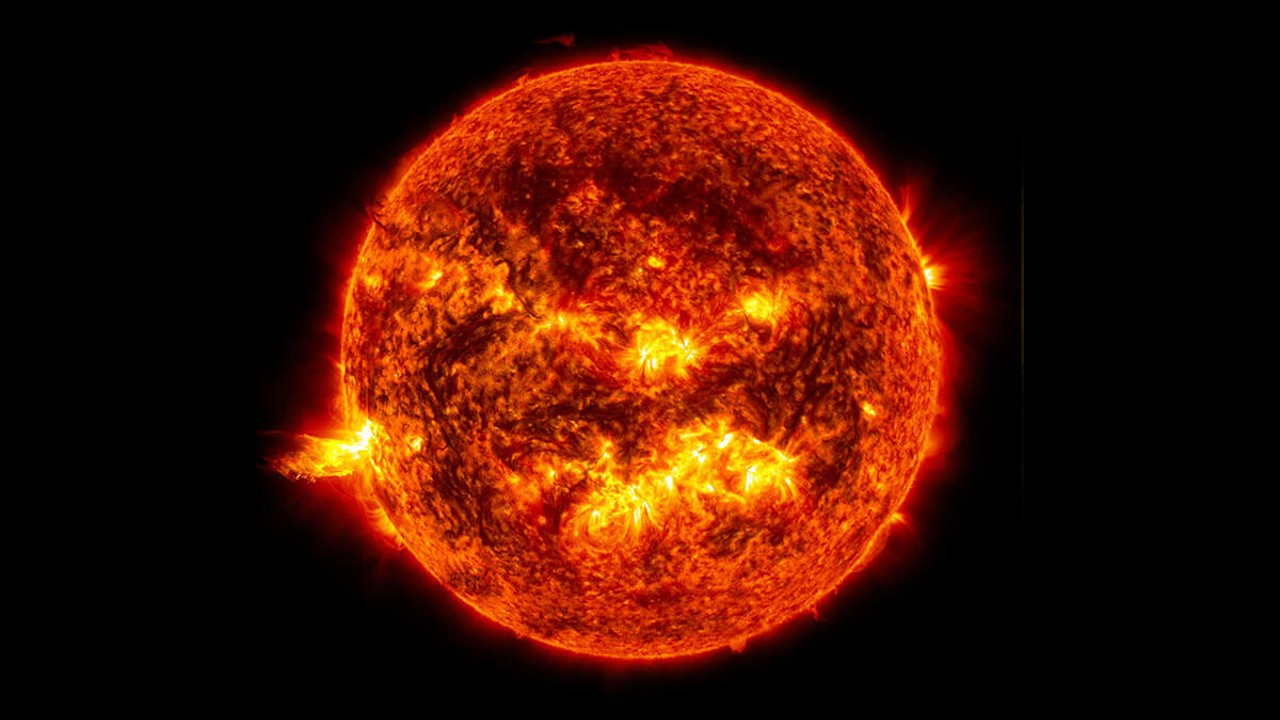Scientists may finally know why the sun's outer atmosphere is so freakishly hot
"Our finding provides important information for answering the long-standing question of what heats the corona of the sun."

The highest reaches of the sun's atmosphere are thousands of times hotter than its surface, and a new study reveals that this mysterious heat discrepancy could be explained by weak but steady waves propagating in the region.
The "surface" of the sun — the photosphere, or sun's visible part — is about 10,000 degrees Fahrenheit (5,500 degrees Celsius). Oddly, however, even though it is farther away from the sun's core, the uppermost part of the sun's atmosphere — known as the corona — is much hotter, regularly reaching about 1.8 million to 3.6 million degrees F (1 million to 2 million degrees C). Sometimes, coronal temperatures even reach up to 72 million degrees F (40 million degrees C), according to NASA.
The corona, which is made up of hot ionized gas called plasma, is also where extreme space weather events such as solar flares originate. However, it remains uncertain how the corona gets so hot.
Related: Scientists may have just cracked the sun's greatest mystery
In the new study, researchers investigated common fluctuations associated with the sun known as low amplitude decayless kink oscillations. These are fluctuations in coronal loops, or arch-like structures made of plasma that start in the photosphere and extend into the lower corona. These waves are relatively weak, but do not decay in strength over multiple cycles of fluctuation. As such, they may potentially supply a large amount of energy into the corona over time.
The scientists focused on the way in which these waves rippled either up and down, left and right, or at any angle in between, a property known as their polarization. The ability to analyze this aspect of the waves' 3-D geometry could shed light on their origins as well as how much energy they have available. However, scientists previously lacked a way to examine these waves from multiple lines of sight and therefore detect the phenomena's polarization.
In the new study, the researchers used data from the European Space Agency's Solar Orbiter and NASA's Solar Dynamics Observatory to analyze the solar corona from multiple vantage points. They successfully detected a 4-minute decayless kink oscillation of a coronal loop.
Get the Space.com Newsletter
Breaking space news, the latest updates on rocket launches, skywatching events and more!
The scientists found these waves nearly all vibrate in the same direction. This suggests they are "likely associated with long-duration flows in the solar surface," study co-author Valery Nakariakov, a solar physicist at the University of Warwick in Coventry, England, told Space.com.
This discovery suggests energy from the solar surface can reach the corona and heat it. "Our finding provides important information for answering the long-standing question of what heats the corona of the sun," Nakariakov said.
The scientists detailed their findings online Sept. 12 in the journal Nature Communications.
Join our Space Forums to keep talking space on the latest missions, night sky and more! And if you have a news tip, correction or comment, let us know at: community@space.com.

Charles Q. Choi is a contributing writer for Space.com and Live Science. He covers all things human origins and astronomy as well as physics, animals and general science topics. Charles has a Master of Arts degree from the University of Missouri-Columbia, School of Journalism and a Bachelor of Arts degree from the University of South Florida. Charles has visited every continent on Earth, drinking rancid yak butter tea in Lhasa, snorkeling with sea lions in the Galapagos and even climbing an iceberg in Antarctica. Visit him at http://www.sciwriter.us









